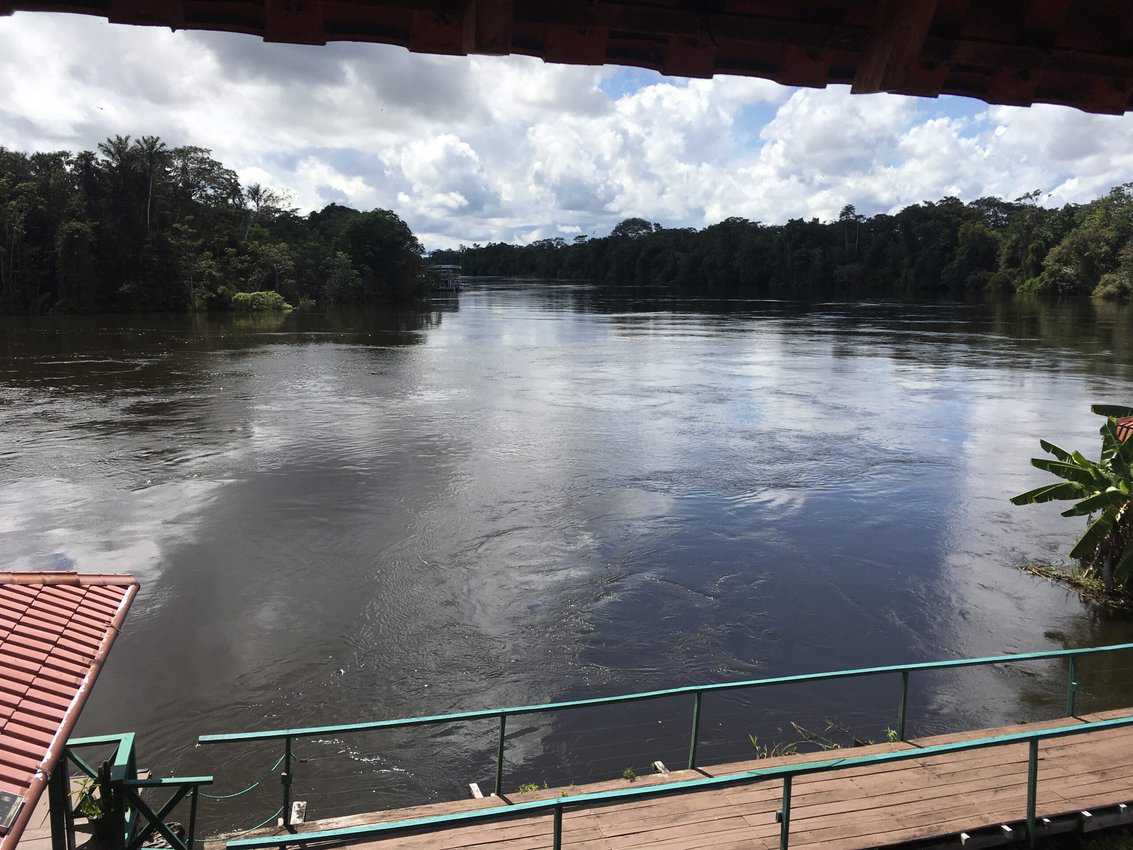
Exploring the Wonders of Uakari Lodge and Mamirauá Reserve: A Haven for Wildlife and Ecotourism
By Dr. Matteo Preabianca

Deep within the heart of the Brazilian Amazon rainforest lies a hidden gem that offers a unique and immersive experience for nature enthusiasts and adventure seekers alike.
Uakari Lodge, located within the Mamirauá Sustainable Development Reserve, provides a gateway to the breathtaking beauty of the Amazon and a chance to witness its incredible biodiversity up close.
A Huge Sanctuary
Stretching over 11,000 square kilometers, the Mamirauá Reserve serves as a sanctuary for countless species of plants and animals.
It was established in 1996 as Brazil’s first Sustainable Development Reserve, which is a groundbreaking concept that aims to balance the preservation of the environment with the socioeconomic needs of the local communities.
The reserve’s unique ecosystem encompasses flooded forests, lakes, and swamps, making it a prime habitat for an astonishing variety of wildlife.
Red-faced monkeys and other iconic animals
One of the most iconic inhabitants of the Mamirauá Reserve is the Uakari monkey, after which the Uakari Lodge is named. With their striking red faces and elegant white fur, Uakari monkeys are endemic to the region and considered a vulnerable species due to habitat loss.

The lodge’s proximity to its natural habitat provides visitors with a rare opportunity to observe these fascinating primates in their natural environment.
Fortunately, I could see the monkey in the afternoon, but could not take any pictures of it, because it moves too fast.
In addition to the Uakari monkey, the reserve boasts an astonishing richness of bird species, including macaws, toucans, hummingbirds, and herons.
This birdwatcher’s paradise offers unparalleled opportunities to spot and photograph some of the most colorful and elusive avian species in the world.
Animals are never enough
Beneath the water’s surface, a hidden realm comes alive, brimming with aquatic life. The flooded forests and lakes of Mamirauá are teeming with remarkable species such as the Amazonian manatee, the largest aquatic mammal in South America.
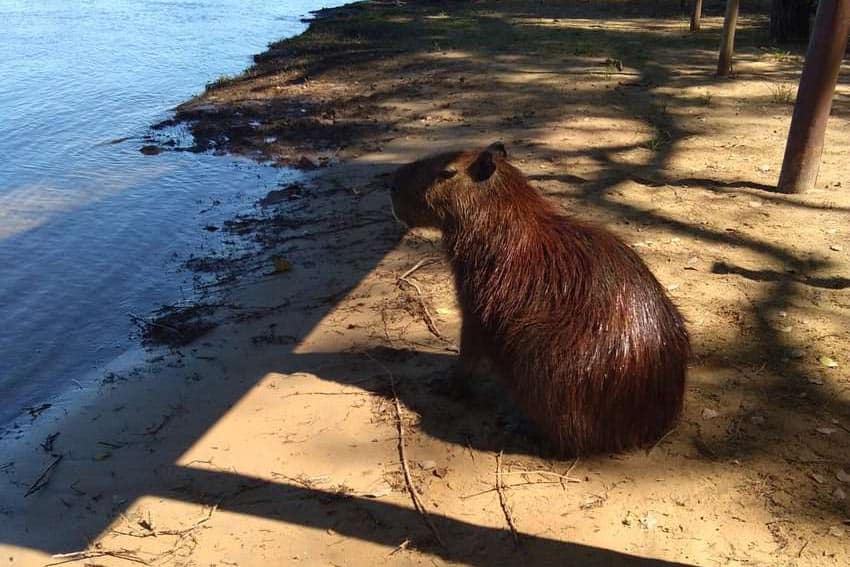
These gentle giants can be observed gracefully swimming through the waterways, their presence provides evidence of the pristine nature of the reserve’s aquatic ecosystems.
The pink river dolphin, a symbol of the Amazon and a creature steeped in folklore and legend, also draws visitors to this region. These captivating mammals, known for their playful nature and distinctive pink coloration, thrive in the river systems surrounding the reserve. And let’s not forget the sloths. These very slow animals can easily be seen in here.
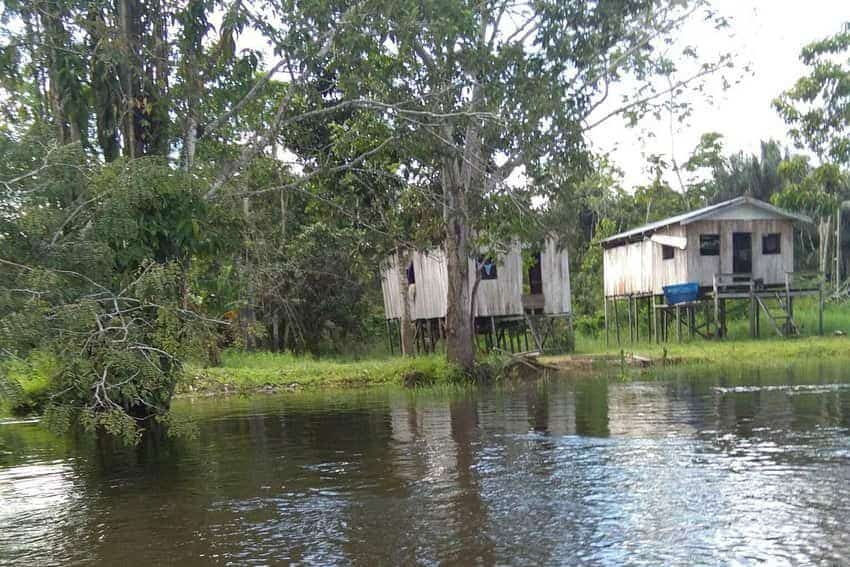
Visitors to Uakari Lodge can embark on boat excursions to witness the enchanting spectacle of pink dolphins leaping gracefully out of the water. To fully enjoy the local wildlife, visitors should bring binoculars.
Ecosystem Preservation
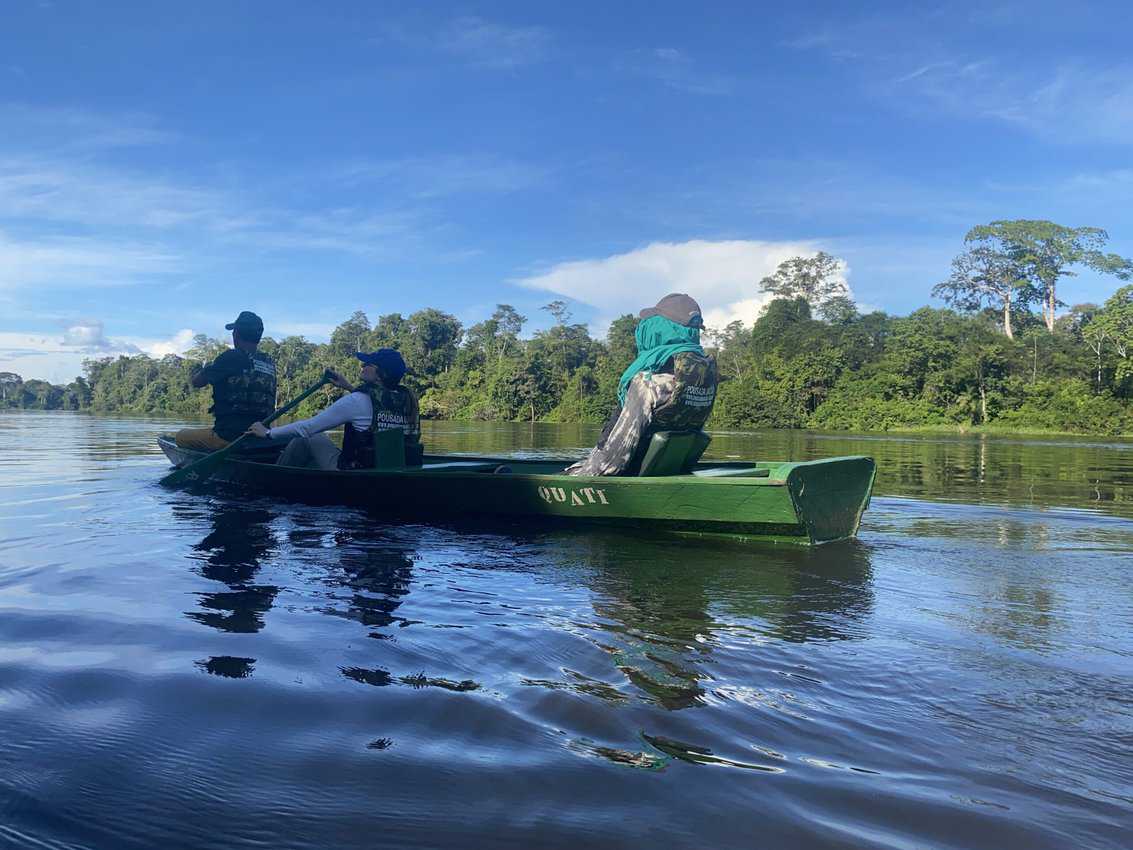
Apart from its rich biodiversity, Mamirauá Reserve stands as a shining example of the power of ecotourism in preserving delicate ecosystems.
The establishment of Uakari Lodge and other sustainable tourism initiatives within the reserve provides an alternative to destructive activities, such as logging and mining, offering local communities an opportunity to participate in conservation efforts while improving their quality of life.
Ecotourism at Uakari Lodge follows strict principles of sustainability, aiming to minimize its environmental impact and promote the well-being of both wildlife and local communities.
The lodge itself implements eco-friendly practices, such as using renewable energy sources and employing local residents as staff members. These initiatives create a sense of shared responsibility for the preservation of the surrounding natural wonders.
How to Get There
Travelers can reach the lodge from the city of Tefé (about a one-hour flight from Manaus) with the help of an hour-long private boat ride from a small port.
Tefé does not offer many attractions, but if you want to have a non-tourist experience in one of the very few Brazilian forest towns, I recommend staying at least one night.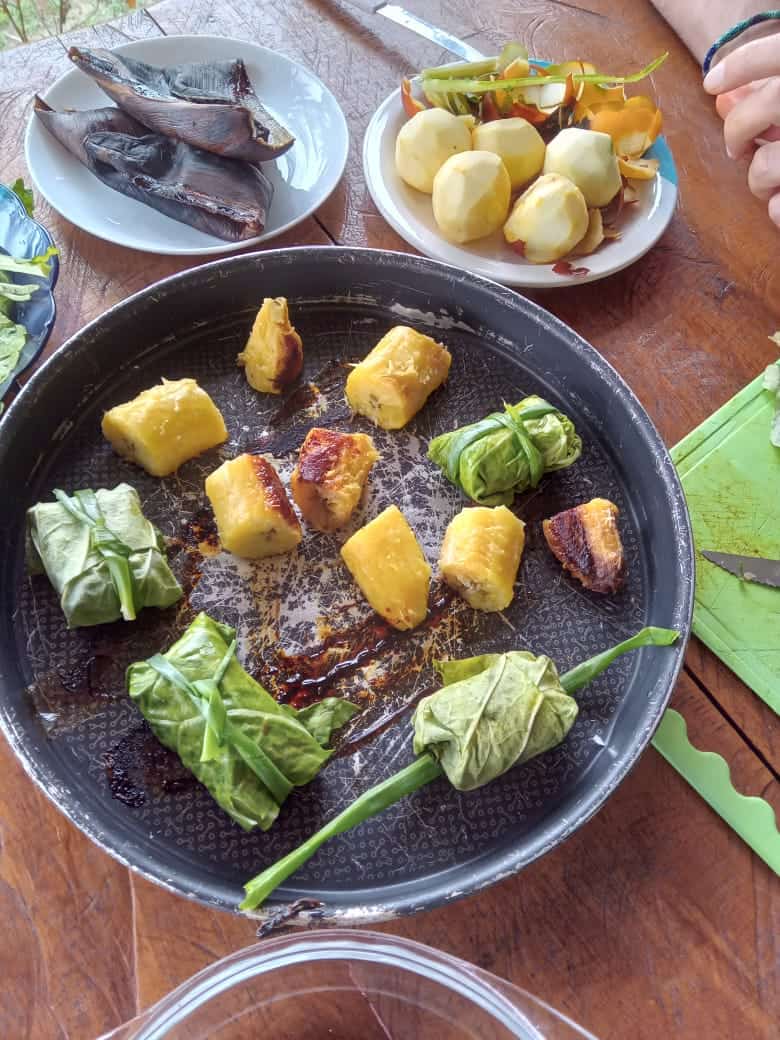
Visitors to Uakari Lodge have the chance to engage in a range of activities that allow them to explore and appreciate the unique ecosystems of the Mamirauá Reserve.
Preserving Indigenous Life and Customs
The second place I visited is an indigenous community called Nova Esperancia, within Puranga Conquista Sustainable Development Reserve.
It stands as a testament to the harmonious coexistence between humanity and nature.
With their deep-rooted customs, profound connection to the land, and sustainable practices, the indigenous peoples of Puranga Conquista exemplify a way of life that cherishes ecological balance and cultural heritage.
Puranga Conquista, located in the heart of Brazil, is an extraordinary sanctuary that safeguards both biodiversity and indigenous culture.
For centuries, ancestral tribes, such as the Tikuna, Kokama, and Yagua, have inhabited this pristine territory.
Now there lives a group related to these, called Baré. I was their guest. These indigenous communities have long revered the land as a sacred entity, recognizing its intrinsic value beyond mere resources.
Their intimate knowledge of the rainforest passed down through generations, has fostered a deep symbiotic relationship with the ecosystem.
Traditional Wisdom and Sustainable Practices

Indigenous life in this community revolves around sustainable practices that reflect a profound understanding of nature’s delicate equilibrium. The communities adhere to the principles of agroforestry, cultivating crops while preserving forest cover. Aldovar, a local farmer, showed me the exciting process of making flour from cassava.
The Indigenous community’s wisdom and traditional knowledge guide them in selecting the right plants, fostering biodiversity, and avoiding monocultures. Additionally, their mastery of medicinal plants is unparalleled, as they utilize the rainforest’s abundant pharmacopeia for healing purposes.
 Aldovar revealed himself to me in another guise, that of a shaman. He showed me all the plants he works with including lemon, honey, crocodile pee, and a small pickled snake. He wanted to cure my tinnitus. I hoped he only uses plants.
Aldovar revealed himself to me in another guise, that of a shaman. He showed me all the plants he works with including lemon, honey, crocodile pee, and a small pickled snake. He wanted to cure my tinnitus. I hoped he only uses plants.
Things to do and see
I stayed six nights in Nova Esperancia, perhaps a bit too many because there is not much to do. However, I spent my days between the local elementary school, attending classes in Nheengatu, the local indigenous language, and Brazilian jujitsu lessons, kindly offered by the English teacher.
On the one hand, the indigenous community where I stayed does not have the classic exotic stereotype. The way of life is very similar to other rural regions. On the other hand, I felt like I was in a world hidden from me, with flavors and customs not easily seen in other parts of Brazil.
Fortunately, while I was planning my trip I came across Braziliando by chance. This small company promotes community-based tourism experiences in communities around Manaus. The itineraries are developed together with the residents of these communities, according to their needs, and taking
environmental preservation very seriously.
Thus, besides contributing to a project with a positive social impact, the traveler has the chance to experience the Amazon in a way more connected to local reality. While other tours include a stop of a few hours in a riverside community, you will have the chance to really experience this day-to-day life.
From Manaus to the Community
To get to the community I sailed on the Negro River and then on the Cuieiras River. Leaving Manaus in a recreational boat, a means of transport normally used by the population, it is about a 7-hour trip. Each way costs R$35 per person, paid when getting off the boat.
It is possible to charter a private boat to make the trip from Manaus to Puranga Conquista in two or three hours, but it costs around R$ 600 for one passenger and R$ 1,000 for a group of two to five people.
I confess I was apprehensive when I thought about the seven-hour boat trip because I heard these boats are sometimes overcrowded and accidents have already happened in the region. Besides safety issues, I thought it might be uncomfortable, tiring, or tedious.
But I worried for nothing because the trip ended up being one of my favorite parts of this experience. The boat was not crowded and the atmosphere felt calm. I observed the riverside communities, with some isolated houses along the way. From time to time, small boats approach mine, while we slowed down to allow passengers to arrive or depart.

Food, crafts, and Forest Walking
Puranga Conquista was founded by indigenous people of the Baré ethnicity. Today, about 40 families live there, and most of them are related to each other. Many inhabitants make their living from farming or selling handicrafts.
The food was homemade, delicious, well-served, and all included in the package. We ate some typical delicacies, like macaxeira and tapioca cakes, tapioca flakes mixed in coffee with milk, tucumã, and fruit juices from the backyard.
The highlight of these days was the forest walk. I could not do that at Uakari Lodge because that area is completely flooded this season. I spotted different varieties of trees and mushrooms, thanks to the thorough explanation of Walmir, my guide for the day.
Challenges and Threats
While Puranga Conquista Sustainable Development Reserve serves as a haven for indigenous communities, it faces several challenges. Encroachment from illegal logging, mining activities, and unsustainable agriculture poses threats to the delicate ecosystem and the traditional way of life.
Furthermore, climate change exacerbates these challenges, with increased droughts and extreme weather events disrupting the fragile balance of the rainforest.
Conservation Efforts and Future Prospects
Efforts to protect and preserve the indigenous life and customs in Puranga Conquista are underway. Collaborations between indigenous communities, non-governmental organizations, and government agencies aim to combat illegal activities and promote sustainable livelihoods.
Initiatives include sustainable agroforestry projects, education programs, and eco-tourism ventures that promote cultural exchange while respecting indigenous rights and traditions. These efforts not only safeguard the rainforest's ecological integrity but also empower indigenous communities to thrive economically and culturally.
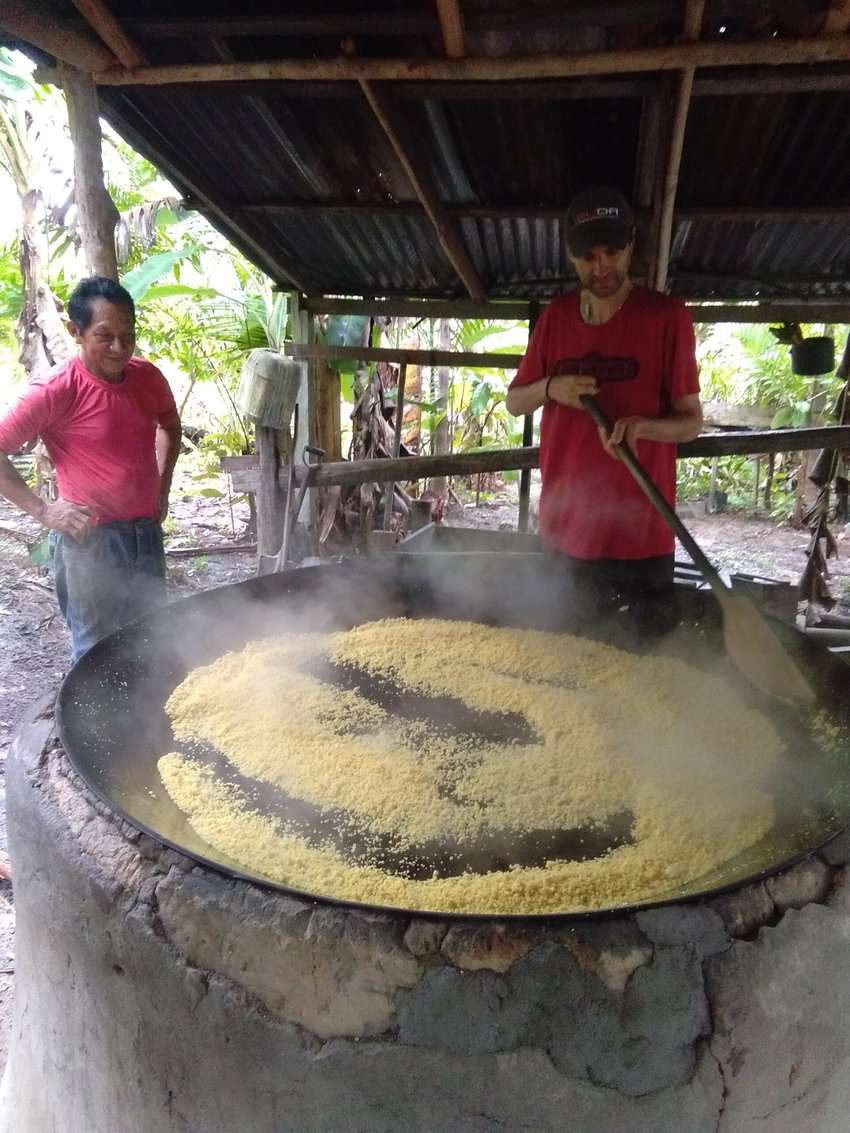
The reserve exemplifies the potential for sustainable development that honors indigenous life and customs. The wisdom of the indigenous communities, their sustainable practices, and their profound spiritual connection to the land offer invaluable lessons for achieving ecological balance.
By recognizing and respecting their rights and traditions, and by actively engaging in conservation efforts, we can ensure that it remains a beacon of hope, demonstrating the possible coexistence between humanity and nature that is essential for a sustainable future.
In both places that I visited, I found languages I had never heard of, learned ways to prepare and consume food, especially cassava, tasted unknown fruits, experienced multi-use medicinal plants, and developed a sort of magic relationship with the forest and the river.
Brazil: A Remarkable Wildlife Safari in the Pantanal

Matteo Preabianca has been traveling for more than 15 years living in several countries, including Italy, Switzerland, Russia, India, USA, China, Australia, Mali, Mexico, and now, the UK, where he works as a languages expert.
- Shhh, Keep Quiet About Queretaro - September 30, 2024
- Wroclaw Poland: A City Full of Dwarfs - September 25, 2024
- Hoi An–A City Frozen in Time - September 19, 2024


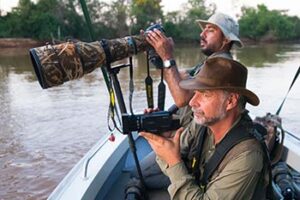

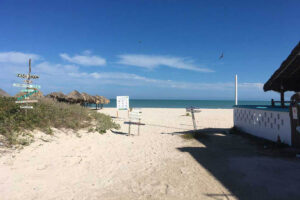

Thanks! Where do you recommend?
hi, Matheo thanks to share your knowledge and your experience about the responsibility for the preservation of the surrounding natural wonders in Brazil, I would like that you can visit also the Amazon part by Peru and see the nature life and the best way to preserve it